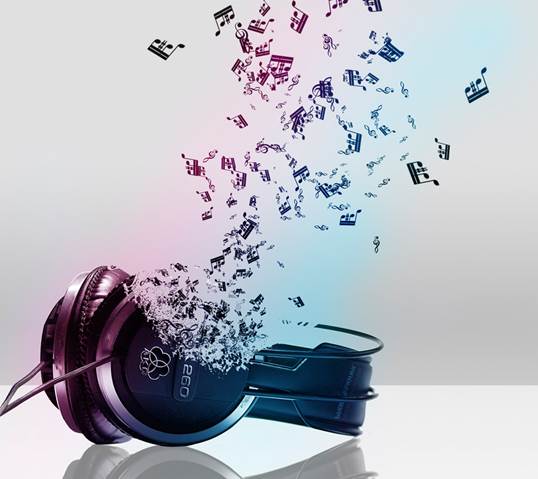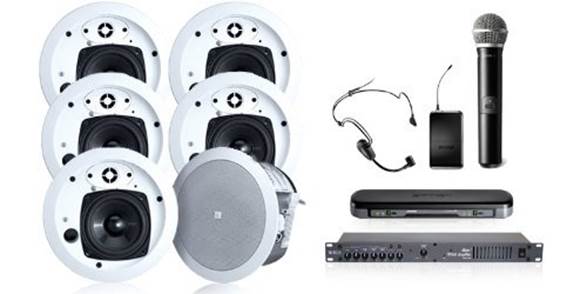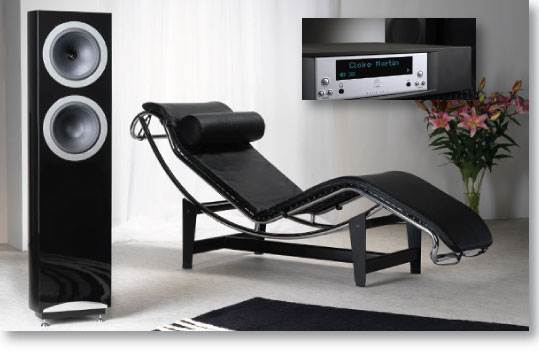On a quest to discover true aural
nirvana
A great set of headphones is more than just
a device to play music on. For many it’s an escape; an escape from reality,
from the noise, cacophony and mundane drudgeries of life. Put on a set of cans
and you’re instantly transported away from reality into a sensory joyride
that’s only yours for the taking. No more annoying colleague, no more mindless
chatters on your daily commute – it’s just you and your personalized
entertainment. In fact if someone is wearing headphones people naturally tend
to leave them alone unless it’s really important.

A
great set of headphones is more than just a device to play music on
This brings us to the second aspect of our
test: Headphones can not only enhance your aural experience, but also ensure
that you don’t disturb others. Gaming headphones for instance, apart from
promising to provide positioning precision, also let you enjoy your gaming
sessions without anyone asking you to “turn down the volume” or “do your
homework”
We’ve forever held a deep-seeded passion
for sound. Be it headphones, speakers, amps, sound mixing, and even instruments
– there are audio enthusiasts as far as the eye can see; which in our case is
not very far thanks to our new statuesque loft office. Within these audio
enthusiasts there are opinionated camps such as the age old speaker vs.
headphone duelers; the neutral purists or the “flat liners” as we like to call
them, who believe audio equipment should only do the job of reproducing the
signal as the recording engineer intended it to be. For them any device which
causes a deviation from that intended sound, whether good or bad, should be
pooh-poohed. Then there are the “colored” boys (disclaimer: we’re not racist),
who swear by the sweet twang of a Grado, or the shrill allure of a Klipsch. The
reference gear enthusiasts believe that any coloring, if at all needed should
be done externally. That’s what DSP effects are for!

We’ve
forever held a deep-seeded passion for sound. Be it headphones, speakers, amps,
sound mixing, and even instruments
So far if you’ve noticed we haven’t used
the word “Audiophile”. While the word carries a lot of meaning, it’s somehow
been overused and almost abused of late. Every other manufacturer is coming out
with Audiophile speakers or headphones, which in all honesty can hardly even
qualify as decent audio, let alone Audiophile- grade. At the same time, there
are self-proclaimed Audiophiles (especially on forums) who like to try as many
headphones as they can get their hands on but derive little joy from them
except laying a claim to a misplaced sense of elitism. Nevertheless, an
offshoot of all this newfound interest in audio is that the overall level of
the industry as well has the listener has risen. There’s literally a legion of
true music enthusiasts who want to get the best audio equipment for their given
budget and are willing to understand the various components of what good audio
is all about. This is where we come in. But our job isn’t easy.

Audiophile
Systems
Describing sound with words is perhaps one
of the biggest challenges a writer or reviewer will ever face. Most will resort
to using ambiguous adjectives ranging from wooly bass to sinewy tones. We for
certain have yet to encounter wooly bass or sinewy tones in all our listening
years. The only alternative to avoid a subjective opinion or flowery adjectives
is to empirically analyze the audio signal reproduced by the headphones. How do
you do that? By letting instruments do the listening – play an audio sample,
record it via a microphone, and analyze the resulting frequency curve to check
whether it is true to source. The last time we did this for one of our speaker
tests, we didn’t get much variation in our results. The reason was the
instruments we were using weren’t sophisticated enough. So until we get our
hands on the perfect audio testing set up – custom molded mannequin head for
binaural placement, high end condenser microphone etc. – we rely on our organic
god given instruments: our good old wizened ears. Why should you trust anyone’s
ears, you may ask? Well one of the qualifying factors is the sheer number of
headphones (or any audio-gear for that matter) that has passed through them at
our test center. But beyond that we rely on a lot of testing standards to
ensure as little ambiguity and reviewer’s bias as possible. Have a look at our
“How we tested” boxes before proceeding to the actual test results.